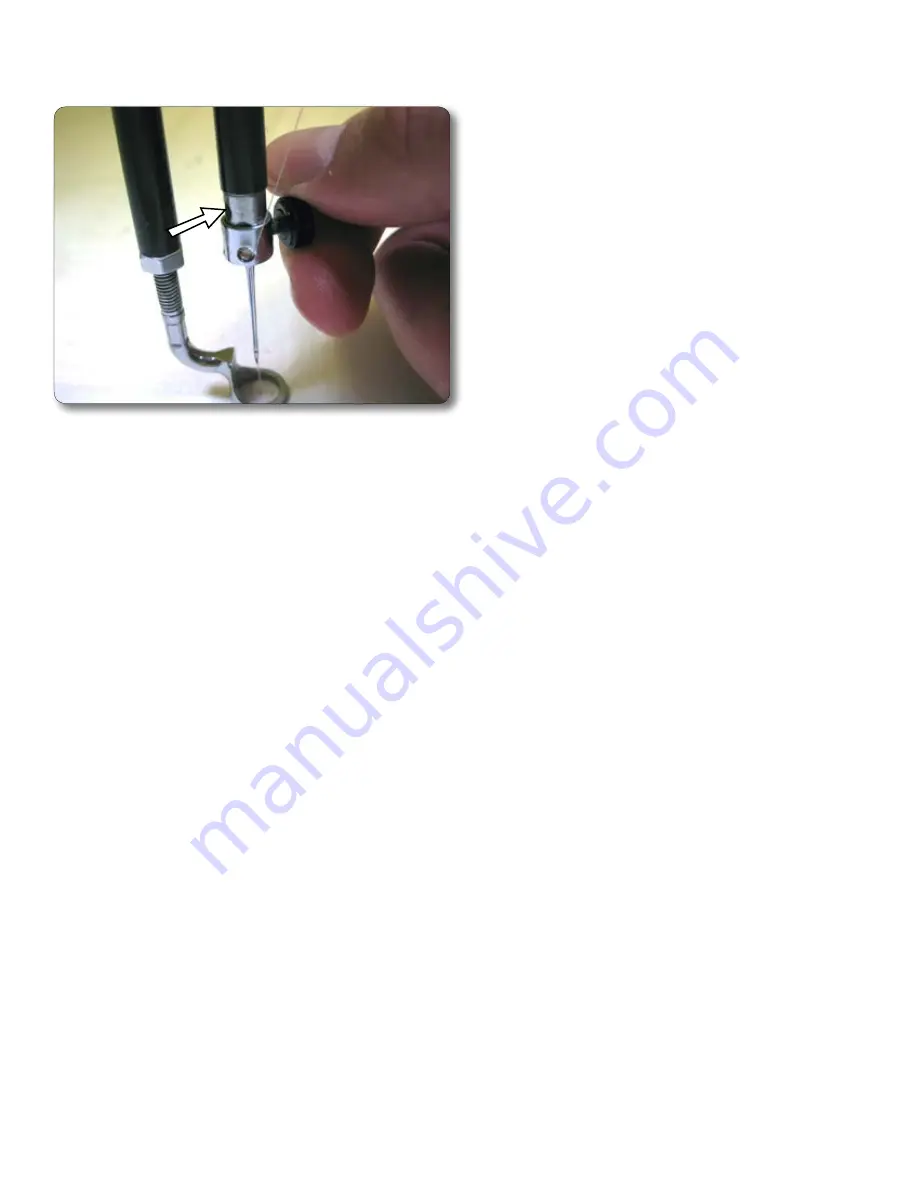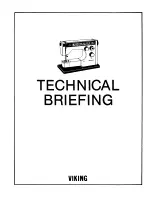
Page 15
Inserting (or changing) the Needle
Figure 7
The needle that is in the machine when it arrives at
your home has been used for 20 minutes of testing.
It is possible that it could be damaged in shipping or
as you remove the machine from the box. For these
reasons, we recommend that you replace the needle
before beginning to quilt with your new machine.
1. Move the needle bar to the highest position by
turning the hand wheel.
2. Confirm that the power is off and that the machine
is unplugged.
3. Loosen the needle-bar clamp thumb screw (see
Figure 7) enough to assure that the needle can be
inserted all the way up to the top of the sight hole.
4. With the scarf (small ground out section/dip on
the back side of the needle just above the needle eye)
facing the hand wheel end of the machine, and the
long groove down the front of the needle facing the
bobbin case side (see Figure 7), push the needle all
the way up into the needle bar – until it can go no
further. Look into the sight hole to verify that the butt of
the needle reaches the top of the sight hole.
5. Carefully tighten the thumb screw. Over-tightening
the thumb screw will result in damaged threads or
stripping of the screw hole. Stripped holes are not
covered under warranty. To avoid over-tightening the
screw, finger-tighten only.
The foot is adjusted at the factory and should not be
moved without consulting your dealer.
Adjusting the Hopping Foot
SIGHT
HOLE
Note:
Changing the needle is recommended for each
new quilt loaded on the machine or any time the needle
becomes bent, dull or burred.
Needles are inexpensive and are important to the
success of your project. Plan to change needles every
5-7 hours of quilting or more often if working with a lot
of fusibles or heavy materials.
Needle/Thread Selection Guide
Needle Size
14 (90)
16 (100)
18 (110)
20 (120)
Threads
Silk (100 wt) 60 wt., monofilament,
glitter, some metallics
60 wt., 50 wt., 40 wt., monofilament,
glitter, metallics
50 wt., 40 wt., 30 wt., metallic
30 wt., 20 wt., 12 wt.
















































